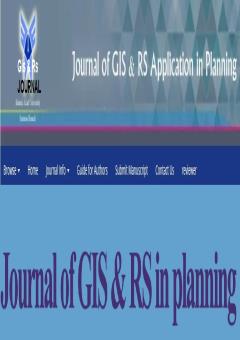Structural modeling of the explanatory elements of natural hazards in the development of Ahvaz metropolis
Subject Areas :
mahnaz ameri
1
![]() ,
mohammad ebrahim afifi
2
*
,
marzieh moghali
3
,
mohammad ebrahim afifi
2
*
,
marzieh moghali
3
![]()
1 - Larstan branch,Islamic Azad University,Lar, Iran
2 - Assistant Professor of Islamic Azad University, Larestan branch
3 - null
Keywords: development, natural hazards, Ahvaz city, interpretive structural modeling.,
Abstract :
Throughout the history of human life, natural hazards have always existed, but due to the exponential growth of the population and the density of humans in all areas of life, especially in high-risk areas, today mankind is witnessing major disasters such as floods, tornadoes, droughts, etc. In this regard; The aim of the current research is to identify and explain the structural components explaining natural hazards in the development of Ahvaz metropolis. It is practical in terms of targeting and descriptive-analytical in terms of methodology. The statistical population consisted of university professors and experts in the field of research in Ahvaz city, who were selected by purposeful sampling. Therefore, in this research, 30 university professors and research experts were selected from the purposeful judgmental sampling in order to carry out and implement the research. became In order to achieve the goals of the research, using the new analytical methodology of Interpretive Structural Modeling (ISM), the relationships between factors were determined and analyzed in an integrated manner. Finally, by using MICMAC analysis, the factors with regard to their influence and effectiveness on other components, The results of the interpretative structural model of the factors affecting the internal development of the city showed that the obtained model includes four levels, and the results showed that the factors of flood and fine dust are the most basic factors affecting the internal development of the city, which should be considered in the first place. They should be emphasized, in other words, any action to lay the groundwork for the internal development of the city requires attention to these factors along with the other mentioned factors.
Bragagnolo, L., daSilva, R.V., Grzybowsk, J.M.V. (2020); Artificial neural network ensembles applied to the mapping of landslide susceptibility, CATENA, Vol 184, 10424: 1-19.
Christiaensen, L., De Weerdt, J., Kanbur, R (2015). Urbanization and Poverty Reduction: The Role of Secondary towns in Tanzania, Prepared for The Planning Commission, President’s Office, Tanzania.
Dodman, D., Leck, H., Rusca, M., & Colenbrander, S. (2017). African Urbanisation and Urbanism: Implications for risk accumulation and reduction. International Journal of Disaster Risk Reduction, 26(5): 7–15.
Hussain, M. A., Shuai, Z., Moawwez, M. A., Umar, T., Iqbal, M. R., Kamran, M., & Muneer, M. (2023). A Review of Spatial Variations of Multiple Natural Hazards and Risk Management Strategies in Pakistan. Water, 15(3), 407.
Kellogg CA, Griffin DW, Garrison VH, Peak HK, Royall N, Smith RM, Shinn EA, 2019. Characterization of aerosolized bacteria and fungi from desert dust events in Mali, West Africa. Aerobiologia, 20: 99- 110.
Laframboise, Nicole; Sebastian Acevedo (2020). “Man versus Mother Nature.” Finance & Development 51 (1): 44–47.
Ostrowska. M and Mazur. S. 2015. Risk in a Crisis Situation. Procedia Economics and Finance. No 3. Vol 23. Pp 1054-1059.
Rutgersson, A., Kjellström, E., Haapala, J., Stendel, M., Danilovich, I., Drews, M., ... & Wasmund, N. (2022). Natural hazards and extreme events in the Baltic Sea region. Earth System Dynamics, 13(1), 251-301.
Smith, Keith. Environmental hazards: assessing risk and reducing disaster. Routledge, 2013.
Su Jun -Pin., (2017), Analyzing policy impact potential for municipal solid waste management decision -making: A case study of Taiwan, Resources

